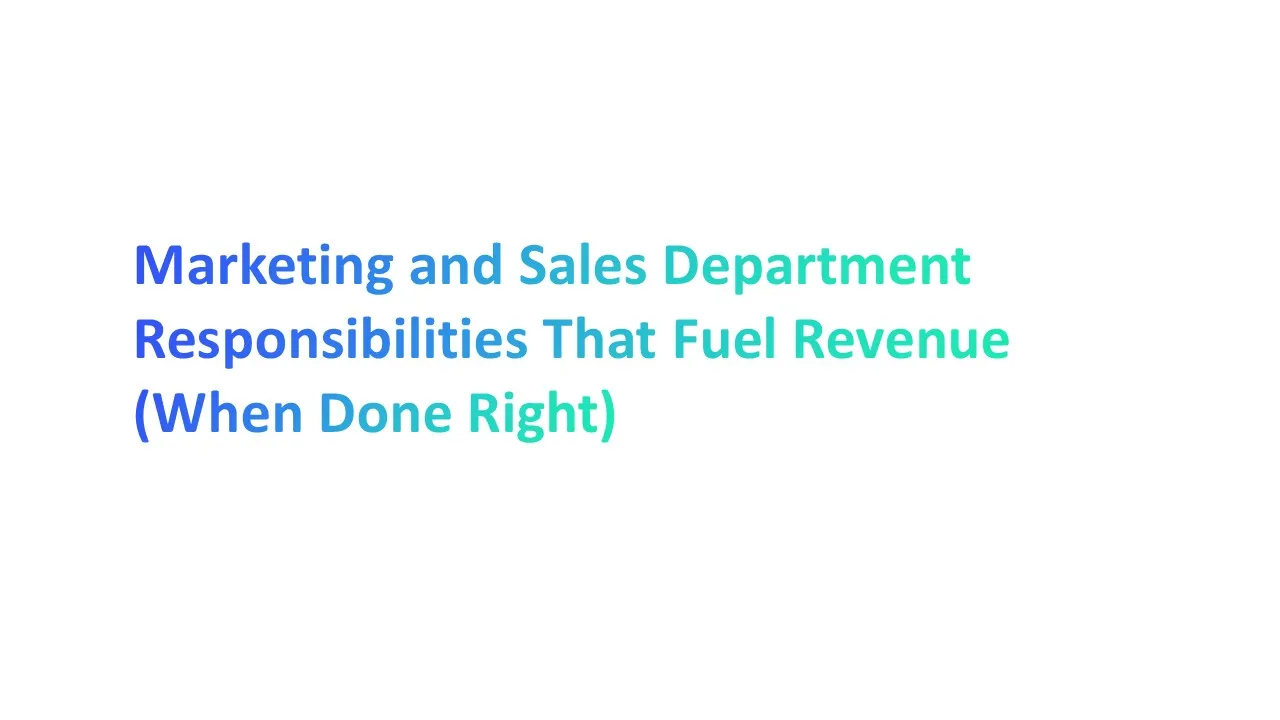Email is a formidable beast for your company. Sending out a well-designed email campaign with the best email subject lines for sales will be very instrumental in increasing your revenue.
Business emails get eight times as many opens and clicks, resulting in six times as much income. Hence, you should use the best email subject lines for sales to convert your prospects.
You must concentrate on the subject line in order to improve your email's open rate.
It's because a staggering 47% of emails are opened or deleted based solely on their subject line, making it clear how important an effective and fascinating subject line for sales is.
When you consider how many emails are being sent every day (hint — it isn't millions), it all makes sense: people are becoming more invested in their email correspondence, and are getting better at sorting through the clutter.
The statistics don't lie, but it's important to understand that your recipients have precisely zero interest in opening your emails if you don't understand what they want or need from you.
They're not waiting with bated breath for your next brilliant sale.
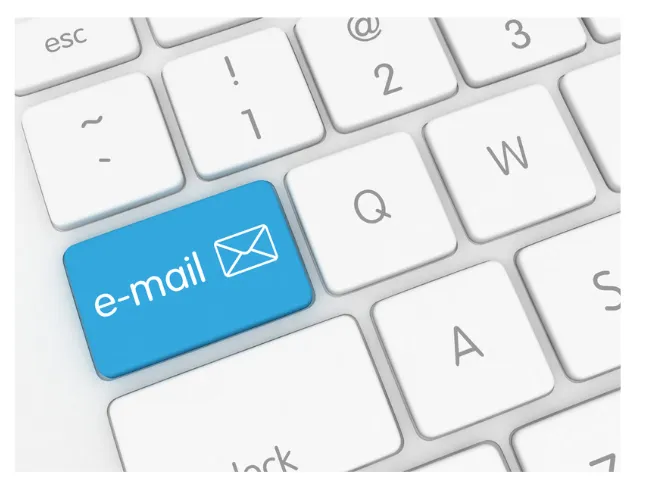
What Makes a Good Subject Line?
A great subject line grabs attention fast. It makes people want to open your email. Use simple words and keep it short. Compelling subject lines intrigue readers by sparking curiosity or addressing their needs.
A strong subject line draws attention by highlighting a clear benefit. For example, “Your Exclusive Offer Inside!” feels exciting. Personalize it by adding the recipient's name or company. Focus on their needs or pain points.
Avoid spammy phrases like “Act Now!!!” that trigger spam filters. Instead, use action-oriented language like, “Unlock New Sales Opportunities Today.” Always test your subject lines to see what works best. Craft subject line promises that deliver on expectations to build trust and engagement.
What Should Be The Content Of a Great Sales Email Subject Line?
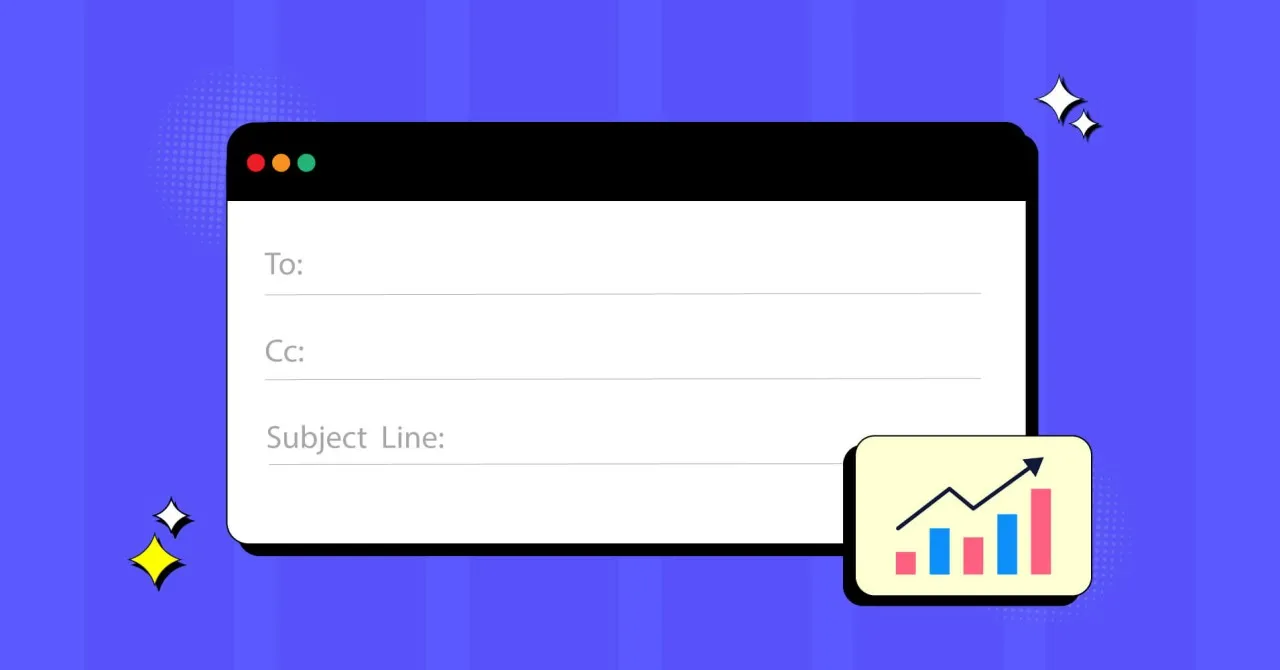
On a daily basis, the typical office employee receives over 121 emails, many of which are difficult to sift through without rapid action. Anything that looks like spam will be disregarded.
You need to make your email subject line stand out, but you also have to balance this with presenting information that is useful. Your email subject line can act as the first step in a seamless sales process.
That's why your subject line and email should be both more creative than usual spam emails. There are a variety of ways to inject some flair into your email marketing campaign, such as:
- The recipient's name in your subject line or message may make a significant difference. By utilizing personalized subject lines, you may boost your open rates by 50%.
- Emojis: The usage of distinct emoji forms allows us to convey our feelings in today's text-only environment. In fact, emojis have led to a 56% boost in open rates for businesses that employ them.
- Adding a video: According to the latest statistics, emails with videos get a 300% more CLICKS than those without.
People can watch a video and get a better idea of what your company is all about than merely reading the email.
This means that your emails are less likely to be deleted or overlooked. Keep in mind that people prefer images over text, so if you're able to find creative ways to blend these elements into your email marketing campaign, it could result
How to Create Catchy Email Subject Lines That Avoid Spam Filters
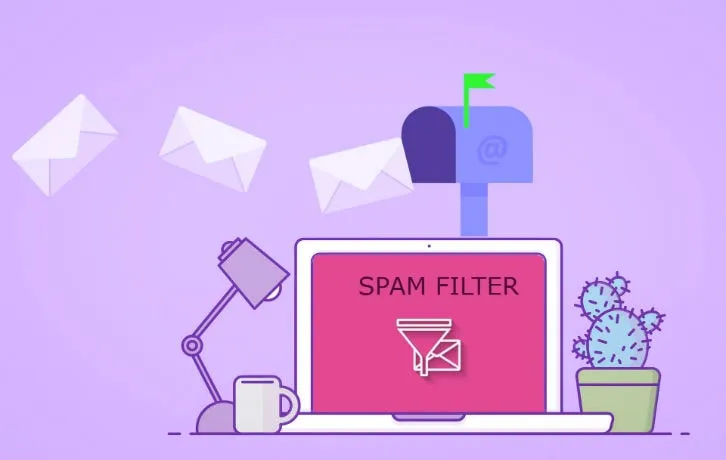
Catchy subject lines are essential for standing out in crowded inboxes.
1. Keep It Short and Direct
Effective subject lines use concise language to clearly convey the email’s purpose. A good subject line is short and easy to understand. It gets straight to the point. Readers should know what the email is about in just a few words.
Why It’s Important:
People are busy. They don’t have time to read long subject lines. Short and clear subject lines also look better on mobile devices, where space is limited. Research shows that subject lines with fewer than 50 characters have higher open rates.
How to Implement:
- Use 4-7 words in your subject line.
- Focus on the most important idea. For example: “Limited Offer: 20% Off Today”.
- Avoid using unnecessary words like “Hello” or “Greetings” that don’t add value.
- Test your subject lines to find the best-performing length.
An eye-catching subject line increases open rates by making your email stand out.
2. Avoid Spam Trigger Words
Spam filters are programs that sort out emails that look suspicious. They flag emails with certain “trigger words” as spam. These are words like “Free,” “Buy Now,” or “Limited Time”.
Avoid clickbait subject lines as they may harm your credibility and open rates.
Why It’s Important:
Emails caught by spam filters won’t reach the recipient’s inbox. If your email doesn’t get opened, it won’t achieve its goal. Avoiding these words helps your emails look professional and trustworthy.
How to Implement:
- Skip overused phrases like “Act Now” or “Congratulations!”.
- Use clear and honest language. Instead of “Free Gift,” try “Exclusive Offer for You”.
- Be careful with punctuation. Too many exclamation marks (!!!) can also trigger spam filters.
- Include the recipient's name or company name to make the subject line personal. For example: “John, Here’s Your Monthly Report”.
Using relevant email subject line keywords boosts visibility and engagement.
3. Personalize the Subject Line
Personalizing a subject line means adding specific details about the recipient, such as their name, company, or recent activity.
Why is it important:
People are more likely to open emails that feel tailored to them. Personalization builds trust and makes the recipient feel valued. According to studies, emails with personalized subject lines have a 26% higher open rate.
How to implement it:
- Use the recipient’s first name in the subject line, like: “John, Here’s a Tip for Better Sales”.
- Reference something unique about the recipient, such as their company: “Ideas to Boost Sales for [Company Name]”.
- Mention recent interactions or events: “Following Up on Your Request from Last Week”.
Avoid generic phrases like "Dear Customer." Always make the subject line sound like it’s meant just for them. Mentioning the prospect's company in your subject line makes the email feel personal and relevant.
4. Use Numbers and Lists
This involves adding numbers or creating a list format in your subject line, such as “5 Steps to Increase Your Sales” or “3 Tips to Write Catchy Email Subject Lines.”
Why is it important:
Numbers grab attention. They promise specific, organized content. Research shows that subject lines with numbers can improve open rates by up to 15%. Lists also make information feel easier to digest.
How to implement it:
- Start with a number: “7 Sales Tips to Close Deals Faster”.
- Be specific: “3 Mistakes to Avoid in Email Marketing”.
- Keep the number small for quick readability (3–7 is ideal).
Using numbers and lists in subject lines not only catches attention but also helps your email stand out in crowded inboxes.
5. Create Curiosity
A subject line that makes readers curious grabs their attention instantly. Curiosity encourages them to open the email to find out more.
For example, phrases like “What You Need to Know About [Topic]” or “Have You Heard This?” make people wonder about the content.
Why It’s Important:
Curiosity works because it triggers a natural desire to explore. Research shows that emails with subject lines sparking curiosity often have higher open rates. For sales emails, this is crucial to increase engagement.
How to Implement:
- Use open-ended questions, like “What’s Missing in Your Strategy?”
- Tease the content, but avoid overpromising. For example, “The Secret to Doubling Your Sales.”
- Keep it relevant to your audience’s interests, such as “How This Tool Transforms Your Business.”
By creating curiosity, you ensure your email subject lines for sales stand out in crowded inboxes.
6. Avoid All Caps and Excessive Punctuation
Using all capital letters or too many punctuation marks (like “!!!”) can make your email look unprofessional. Worse, it might end up in spam folders.
Why It’s Important:
Spam filters are designed to block emails that look suspicious or overly promotional. Emails with excessive caps or punctuation often don’t reach the recipient’s inbox.
For example, a subject line like “BEST DEAL EVER!!!” might trigger filters and reduce email deliverability.
How to Implement:
- Keep it natural: Write your subject line the way you would in a text message. For instance, “Check out this week’s deals” is better than “THIS WEEK ONLY!!!”
- Limit punctuation: Avoid using more than one exclamation mark or question mark. A subject line like “Want to Learn More?” is clear and effective.
- Capitalize wisely: Use caps only for proper nouns or the first letter of each word, like “5 Ways to Improve Sales.”
Following these tips ensures your email subject lines for sales remain professional and spam-free.
7. Be Relevant and Timely
Your subject line must match your email content and the current needs of your audience. It should also align with events or trends.
Why It’s Important:
Relevance keeps your audience engaged. If the subject line doesn’t match the email, recipients might delete it or mark it as spam.
Timeliness increases the chances of your email being opened, especially during peak sales periods or seasonal events.
How to Implement:
- Match the Content: Ensure the subject line summarizes what’s inside the email. For example, if the email is about a sale, the subject line could say, “20% Off This Weekend Only.”
- Use Current Events: Reference holidays, seasons, or industry trends. For instance, during New Year, use “Kickstart 2025 with These Exclusive Offers.”
- Segment Your Audience: Create subject lines tailored to different groups. For example, a tech company might send “The Latest Software Updates for Developers” to one segment and “Simplify Workflows with Our Tools” to another.
- Avoid Irrelevant Words: Keep it concise. Long, confusing subject lines often get ignored. Use clear, impactful words.
Email marketing subject lines should align with campaign goals and audience preferences.
8. Test Subject Lines Before Sending
Testing helps you determine which subject line works best for your audience.
Why It’s Important:
Not every subject line resonates with every audience. Testing ensures you use the most effective one. This improves open rates and reduces the chances of emails going to the spam folder.
How to Implement:
- A/B Testing: Create two versions of a subject line. For example:some text
- Version A: “Don’t Miss These Exclusive Deals!”
- Version B: “Exclusive Offers Ending Soon – Act Now!” Send each version to a small group of recipients. Choose the better-performing one for the rest of your audience.
- Analyze Metrics: Look at open rates and click-through rates. These numbers show how well a subject line performed.
- Use Tools: Platforms like Mailchimp or HubSpot offer built-in testing features. These tools suggest subject line improvements and track results.
- Test Timing: Try sending the email at different times. For example, subject lines sent at 10 AM on Tuesday might perform better than those sent on a Friday afternoon.
Testing different subject lines helps identify what resonates best with your audience.
The Most Effective Email Subject Line Examples
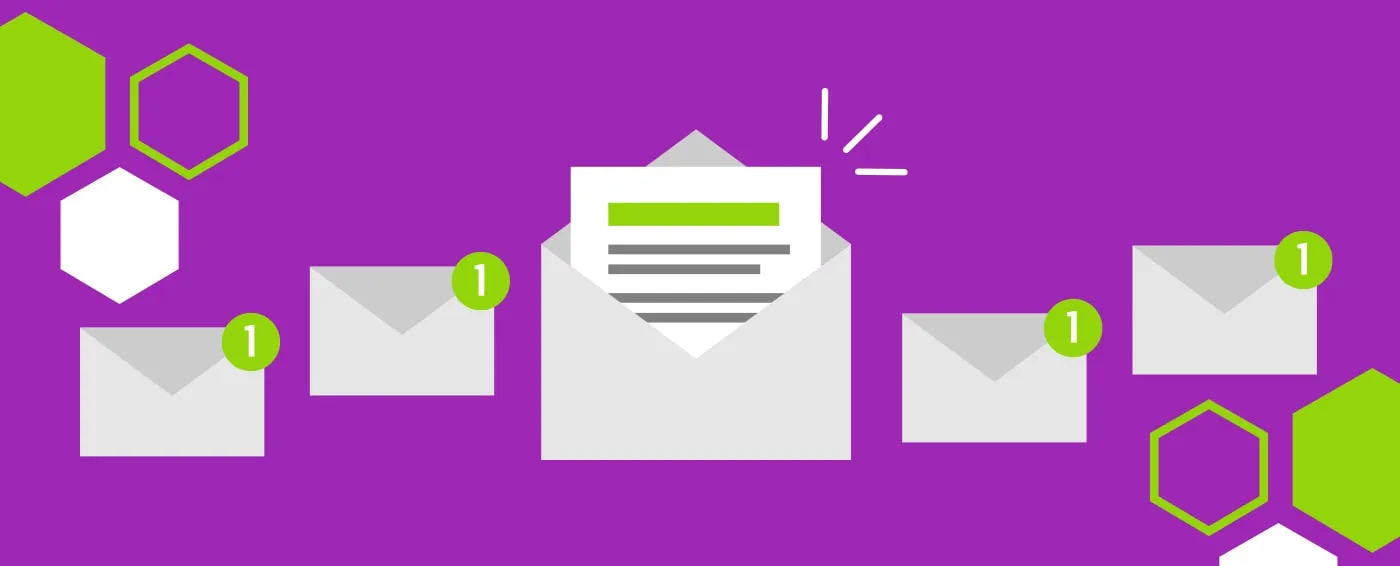
1. Create a Sense of Urgency
Urgency motivates people to act quickly. Use phrases that suggest limited availability or time-sensitive opportunities.
Urgency taps into the fear of missing out (FOMO). People feel compelled to open your email before the opportunity disappears.
Include words like "limited," "last chance," or "hurry." Be specific about deadlines to create real urgency.
- Example: "Limited Time Offer: Exclusive Deals Inside!"
- Example: "Don't Miss Out: Sale Ends Tomorrow!"
2. Evoke Curiosity
Make the reader curious enough to click. Leave them wanting to learn more. Curiosity grabs attention by hinting at valuable insights or surprises inside the email.
Use phrases like "Discover," "Find out," or "Guess what." Avoid giving away too much information in the subject line.
- Example: "Unlock the Secret to Boosting Your Productivity"
- Example: "Guess What Trend Is Taking Over This Season?"
3. Personalize the Message
Adding a personal touch makes your email feel unique and relevant. Personalization makes the reader feel valued. Emails with personalized subject lines have higher open rates.
Include the recipient's name, location, or past interactions. Use dynamic tags in your email software to automate this process.
- Example: "John, Your Personalized Guide Awaits"
- Example: "Special Offer Just for You, Sarah!"
4. Offer Value or Benefits
People love getting something valuable for free or at a discount. Highlight what the recipient gains by opening your email.
A subject line that offers benefits grabs attention quickly. It tells readers they will get something useful, which increases email open rates.
Use words like "free," "save," or "exclusive" to show value. Be clear about what you’re offering. When your subject line is clear about the value, recipients feel it’s worth their time to open the email.
- Example: "Free Ebook: Mastering Time Management"
- Example: "Get 50% Off Your Next Purchase!"
5. Ask Engaging Questions
Questions in subject lines make readers curious. They encourage them to think about the answer and check your email for more information.
Questions feel personal and interactive. They create a connection with the recipient. Use questions that address their needs or goals. Keep questions short and easy to understand.
- Example: "Ready to Transform Your Career?"
- Example: "Is Your Marketing Strategy Up-to-Date?"
These subject lines work because they focus on solving problems or improving skills.
6. Use Numbers and Lists
Numbers and lists make your subject line look organized and actionable. Readers know they’ll get quick, structured tips or insights.
People love digestible content. A numbered list feels simple and easy to follow. Include numbers like "Top 5" or "7 Reasons" in your subject line. Be specific about the topic or benefit.
- Example: "Top 5 Strategies for Financial Success"
- Example: "7 Reasons Why You Should Start Yoga Today"
Numbers help readers know what to expect, making them more likely to click.
7. Incorporate Emojis for Emphasis
Emojis can make your email subject lines stand out. They grab attention in crowded inboxes. But don't overuse them. A single emoji can add a playful or professional tone.
Emojis catch the reader's eye and make your subject line unique. They add emotion or meaning to your message.
Match emojis to your email's tone and content. Use them sparingly to avoid looking unprofessional.
- Example: "🎉 You're Invited to Our Exclusive Webinar!"
- Example: "🚀 Launching Our New Product Line!"
8. Highlight Pain Points and Solutions
Show your readers that you understand their struggles. Then, offer a solution. This approach builds trust and encourages action.
Addressing pain points shows empathy. Offering solutions makes your email valuable. Identify your audience's common problems. Use the subject line to hint at the solution they’ll find inside.
- Example: "Struggling with Time Management? Here's Help"
- Example: "Overwhelmed by Emails? Simplify Your Inbox Now"
Addressing a specific pain point in your subject line shows empathy and builds trust.
9. Include Social Proof or Testimonials
People trust what others recommend. Social proof in your subject line can build credibility. It shows your product or service works for others.
Social proof helps readers feel confident in their choice. It creates a sense of trust and urgency. Share numbers, reviews, or testimonials in your subject line. Highlight your product’s popularity or success rate.
- Example: "Join 10,000+ Satisfied Customers Today"
- Example: "See Why Professionals Trust Our Software"
10. Keep It Short and Direct
Short subject lines save time and grab attention. They work well for busy recipients. Short and clear email subject lines for sales improve open rates. They ensure your message stands out in a crowded inbox.
- Example: "Update Your Account Details"
- Example: "Meeting Rescheduled to 3 PM"
11. Hello, [Name], [Question]?
It makes us happy to be the one who knows the answer. It's also gratifying to be addressed by your real name.
Both of these objectives are achieved in this subject line, which attracts your recipient's attention Asap.
Research more about your present recipient: Where do they work? and What do they enjoy? The vast majority of questions elicit an answer, making this approach quite successful.
Keep in mind that you must be genuine and real; anything less will be deceitful to your recipients.
- Example 1: "Hello, John, Are You Ready to Save 20% on Office Supplies?"
- Example 2: "Hi, Sarah, What's Your Biggest Challenge with Client Retention?"
12. I have an idea for [Topic the Recipient Cares About]
People are hungry for free information, especially if it's about something they care about. This subject line requires some preliminary investigation, but it succeeds.
Is the message intended for a potential client? Perhaps you offer advice on how to improve their daily life, cut down on time spent at the office, or how to determine sales talents using a sales test in order to make things easier.
Is the email addressed to someone who may be a potential business partner? Maybe paint them a picture of how the collaboration
- Example 1: "I Have an Idea for Boosting Your Sales Pipeline"
- Example 2: "I Have an Insight on Improving Your Social Media ROI"
13. We have [ Common Fact] in common.
The objective of every email campaign is to develop a connection. This subject line continues a relationship that has yet to begin. By finding common ground with your recipient, you demonstrate care and attention that spam emails just don't have.
Plus, by educating them on what you're doing, they'll feel more connected to you right away. If you're attempting
- Example 1: "We Both Value Efficient Workflows—Here’s a Tip"
- Example 2: "We Share a Passion for Innovation—Let’s Collaborate"
14. Feeling [Emotion]? I can help!
It's critical to address pain points with an audience. Sales emails should also comply. How can you help your customer solve problems? What would they get out of having your product or service?
- Example 1: "Feeling Overwhelmed by Deadlines? I Can Help!"
- Example 2: "Feeling Frustrated with Low Engagement Rates? Let’s Fix It!"
15. This will solve [Recipient’s Company, Pain Point, ]
The ultimate aim of your sales email is to persuade a client or lead to contact you by making a properly placed telephone action.
But why should that individual respond? why should they buy from you? Outlining the benefits of working with you or purchasing from you in an email is a great place to start.
- Example 1: "This Will Solve XYZ Corp’s Client Onboarding Issues"
- Example 2: "This Solution Can End Your Downtime Challenges"
16. You found what you were looking for?
Have you ever gotten a notification from someone claiming to have been signed up for your email list after visiting your website? Perhaps you've acquired new clients who've revisited your site but didn't buy anything.
Such people will benefit from a subject line, which asks them if they found a solution to their problem or the product they were looking for.
- Example 1: "Did You Find the CRM Solution You Need?"
- Example 2: "Still Looking for the Perfect Marketing Tool?"
17. How Can I help?
It's critical to be helpful from start to end in any business relationship.
This should elicit a response. The issue is tailored to the recipient's particular business, objective, or pain spot, making it more personal.
For potential customers and business prospects, this line may be customized in nearly any way imaginable. Keep things simple.
- Example 1: "How Can I Help You Scale Your Business?"
- Example 2: "How Can I Support Your Marketing Goals This Quarter?
18. [Recipient’s Business, Goal, Etc.]
This should elicit a response. The issue is tailored to the recipient's particular business, objective, or pain spot, making it more personal.
For potential customers and business prospects, this line may be customized in nearly any way imaginable. Keep things simple.
- Example 1: "Your Business Growth Plan Could Use This Strategy"
- Example 2: "Achieving Your Team’s Q1 Goals—Here’s How I Can Help"
How to Use Personalization to Improve Email Marketing Results
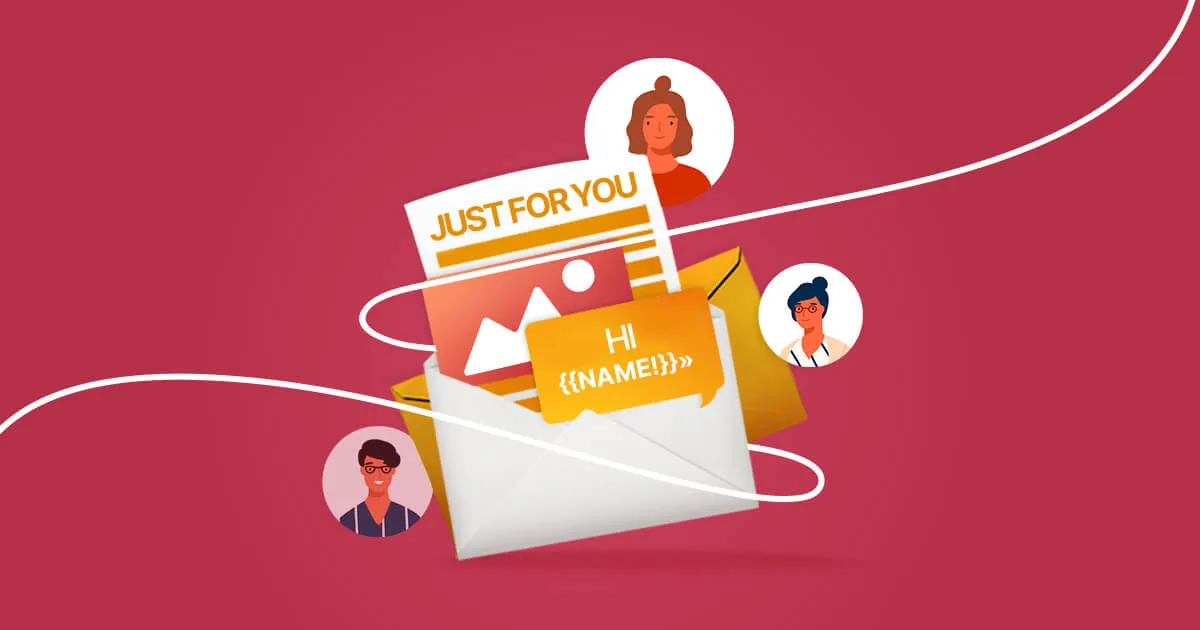
1. Address Recipients by Name
Use the recipient’s name in your subject line or email body. For example, instead of writing "Big Sale on Now," write "John, Don’t Miss Our Big Sale!"
Why It’s Important: Adding a name feels personal and shows the email isn’t just a template. Research shows emails with personalized subject lines have a 26% higher open rate.
How to Implement:
1. Use email tools to insert names automatically.
2. Write subject lines like:
"Sarah, Exclusive Deal for You Today!"
- "Mark, Your Special Offer Awaits!"
Cold email subject lines should focus on the recipient's needs to grab attention.
2. Segment Your Audience
Divide your email list into smaller groups based on shared traits, such as interests, location, or behavior. For example, group customers interested in tech or fashion.
Why It’s Important: Targeted emails feel more relevant. Emails sent to segmented lists see a 14% higher click-through rate.
How to Implement:
1. Collect data like purchase history or location.
2. Use tools to create segments, like "frequent buyers" or "first-time customers."
3. Send subject lines like: "New York Customers, Enjoy Free Shipping!" or, "Gamers, Check Out the Latest Accessories!"
3. Leverage Behavioral Triggers
Send emails based on customer actions, like viewing a product or leaving items in their cart.
Why It’s Important: Behavioral triggers let you send emails at the perfect time. This increases engagement and reminds customers to take action.
How to Implement:
1. Track user activity on your website or app.
2. Use subject lines like: "Forgot Something? Your Cart is Waiting!" or, "You Looked at This—Still Interested?"
4. Personalize Subject Lines
Add the recipient’s name or specific details about them to your subject lines. For example, instead of writing, “Check This Out,” you could write, “John, Here’s a Special Offer for You.”
Why It’s Important: People are more likely to open emails when they feel they’re written just for them. Studies show that personalized subject lines can increase open rates by up to 26%.
How to Implement:
1. Use email tools that allow dynamic fields to insert names or other details.
2. Keep it short and relevant. For instance, “Mary, Don’t Miss This Deal Today!”
3. Ensure the personalized data is correct to avoid mistakes like the wrong name.
5. Offer Tailored Recommendations
Use past interactions to recommend products, services, or resources. For example, if a customer recently browsed winter jackets, your subject line might read, “Stay Warm, Alex: Jackets You’ll Love.”
Why It’s Important: Tailored emails build trust and show customers you understand their needs. It also encourages them to take action, increasing conversions.
How to Implement:
1. Segment your email list by behavior, like browsing history or purchase patterns.
2. Write subject lines that highlight specific recommendations, such as, “Handpicked Accessories for Your Style.”
3. Track responses to improve future recommendations.
6. Incorporate Location-Based Personalization
Mention the recipient’s location to make your email feel more relevant. For instance, a subject line could say, “Special Events in San Diego This Weekend.”
Why It’s Important: Location-based subject lines make your emails stand out. They show you’re aware of your recipient’s environment and offer timely, local solutions.
How to Implement:
1. Use tools that detect the recipient’s location or ask for it during sign-ups.
2. Add their city, state, or country to your subject lines.
Examples include, “NYC Shoppers: Don’t Miss This Sale,” or “Exclusive Deals for Los Angeles Residents.”
Subject Line Strategies for Cold Emails and Follow-Ups
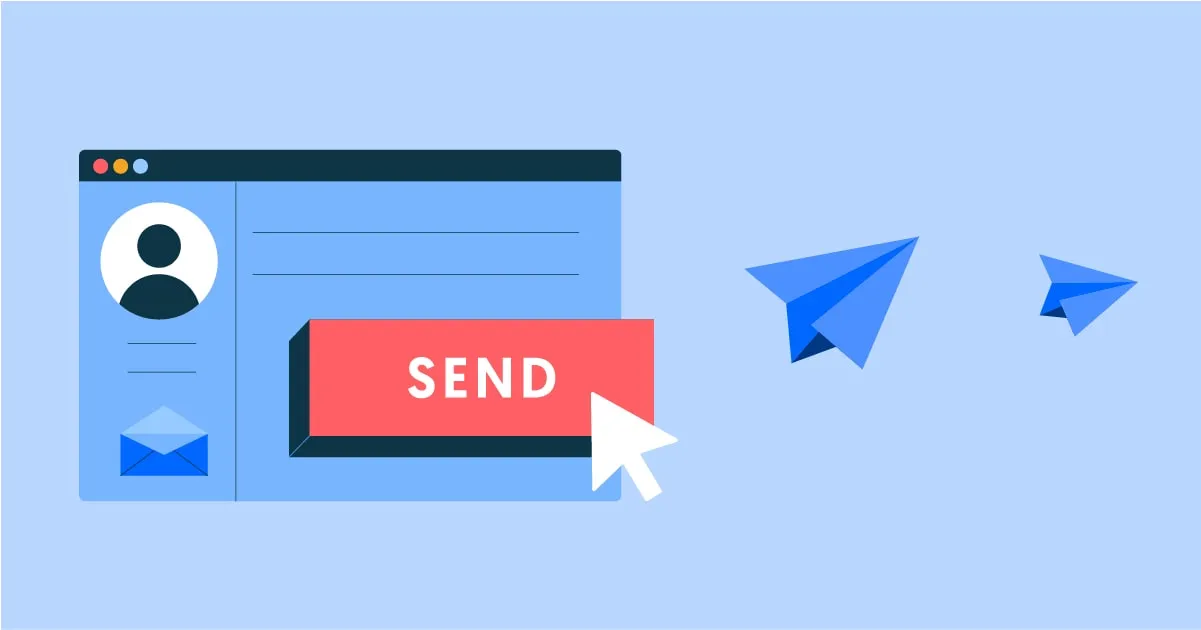
1. Focus on the Recipient’s Needs
Write subject lines that show you understand the recipient's problems. Mention something they care about or need. For example, "Solve Your Lead Conversion Issues Today" or "Struggling with Sales Performance?"
People open emails that offer solutions. A subject line that highlights their needs feels personal and relevant.
How to Implement:
- Research your audience's pain points.
- Use action-oriented words like "solve" or "improve."
- Keep it short and clear. Aim for fewer than 50 characters.
Effective sales subject lines connect with the recipient's goals or pain points.
Example: "Need Faster Sales Results?"
2. Personalize with Specific Details
Include personalized information like the recipient’s name, company, or industry. This makes the email feel tailored just for them.
Personalized email subject lines for sales are more likely to get opened. They show you’ve done your homework and care about the recipient.
How to Implement:
- Use merge tags in your email tool to insert names or company details.
- Mention specific industry challenges or trends.
- Avoid sounding generic. Instead, add value specific to them.
Example: "John, Boost Your Sales by 30% with These Tips"
3. Ask a Thought-Provoking Question
Write subject lines as questions. Questions naturally grab attention and encourage the recipient to open the email to find answers.
Questions make people curious. They also show you understand their challenges and are ready to help.
How to Implement:
- Start with "What if," "Are you," or "Do you."
- Relate the question to their business or goals.
- Keep the question simple and relevant.
Example: "What If You Could Double Your Leads This Month?"
4. Highlight a Mutual Connection
Mentioning a mutual connection in your subject line can grab attention. It makes your email feel personal and builds trust.
People trust recommendations. If you highlight someone they know, your email becomes harder to ignore. It also shows you’ve done your research.
How to Implement:
- Use subject lines like: “[Mutual Connection’s Name] suggested I reach out” or, “[Name] mentioned we should connect”
- Keep the tone friendly and professional.
- Ensure the mutual connection is someone they value or respect.
Pro Tip: Double-check with your connection before mentioning their name.
5. Use Numbers or Data
Numbers and data in your subject line make it specific and intriguing. For example, instead of saying, “Boost Your Sales,” say, “How to Increase Sales by 30%.”
Data builds credibility. It tells the reader exactly what to expect from your email. This works well for sales emails and follow-ups because it shows the value upfront.
How to Implement
- Use metrics like percentages, dollar amounts, or timeframes.
Examples: “Increase your email open rates by 25%” or, “3 simple steps to close deals faster” - Avoid overpromising or using vague numbers. Be realistic and honest.
Pro Tip: Include data that directly relates to their industry or challenges.
6. Time-Sensitive Offers
Creating urgency in your subject line can encourage quick action. Words like “today,” “limited time,” or “last chance” work well for this strategy.
Time-sensitive subject lines tap into FOMO (fear of missing out). They push readers to act before it’s too late. This is especially effective for follow-ups, where you need a nudge to close the deal.
How to Implement:
- Examples of time-sensitive subject lines: “Offer ends Friday: [Benefit]”, “Last chance to secure your discount” or, “Today only: Save 20% on [Service/Product]”
- Keep the tone polite, not pushy.
- Clearly state the deadline or time limit.
Pro Tip: Combine urgency with a clear benefit to make your offer irresistible.
7. Follow up with Empathy and Relevance
Following up with empathy means understanding your recipient’s situation. Show that you value their time and needs. Relevance ensures your email provides something useful or important to them.
Cold emails and follow-ups often get ignored if they lack a personal touch. A relevant and empathetic subject line for sales emails can grab attention. It shows you care about the recipient, increasing the chance they will open your email.
How to implement it:
- Start with an empathetic subject line: Use phrases like, “I understand you’re busy, but…” or “Following up on our last chat.”
- Highlight relevance: Include details about their business goals or challenges in your email.
- Be concise: Avoid long subject lines. Keep them short and to the point.
How to Make the Most Out of Your Email Sales Outreach Campaign.
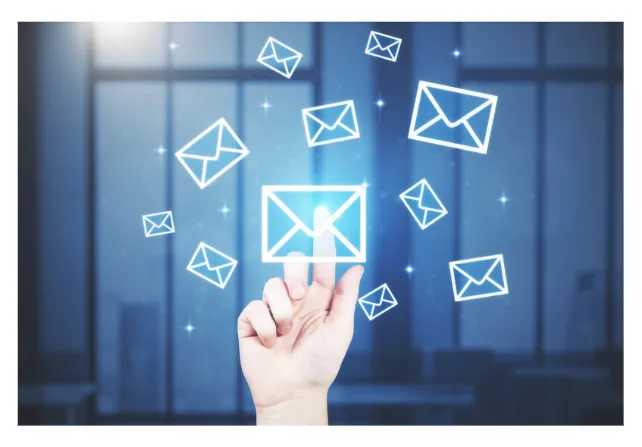
Every expert strives to employ the most up-to-date technology and resources to improve their chances of success.
And, like any other form of outreach, cold emails are much more effective if you could identify the right prospect.
With Voila Norbert, you can easily obtain the email address, simply type in the individual's name and the domain name then you are done.
However, there's another consideration to think about. It's as bad to use one of these tools without first verifying the results as it is not to use one at all.
Not only will this waste your time and generate incorrect email addresses, but it will also raise the number of bounces in your emails.
Your emails are being shut down, which is hurting your deliverability.
As a result of lower deliverability, your emails are more likely to be labelled as spam or removed from prospects' inboxes in the future, resulting in lost potential to develop new customers and earnings.
Fortunately, Voila Norbert is not only correct but also verifies email addresses and passes them on to you:
Pro Tips to Optimize Open and Response Rates
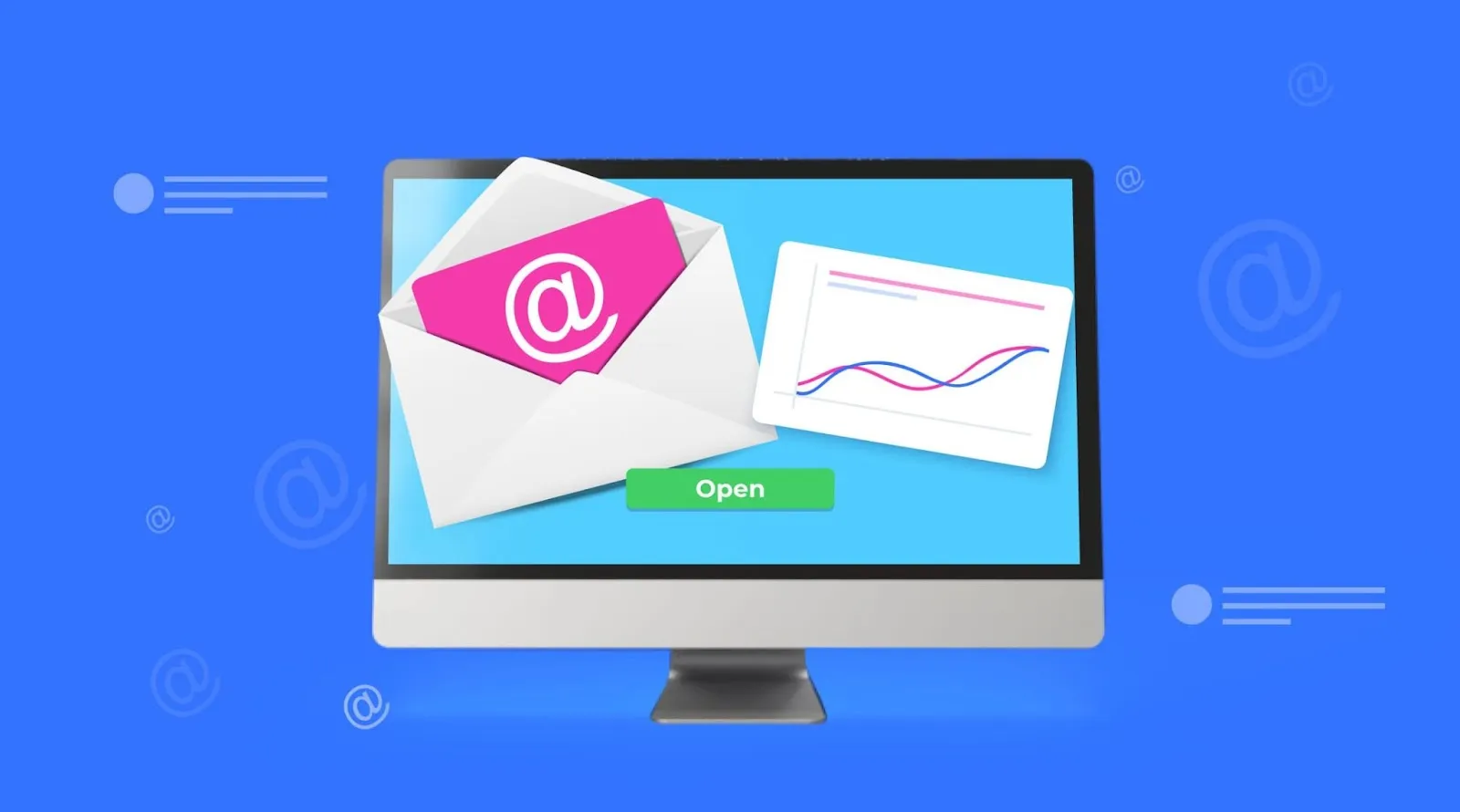
1. Offer Value or Solve a Pain Point
People open emails when they feel they’ll gain something or fix a problem. Use subject lines that highlight the solution or value you offer.
If your subject line doesn’t connect with a need, your email may stay unopened. By solving pain points, you show you understand your prospect’s challenges.
How to implement:
- Use specific phrases like “Save time with these 3 quick tips.”
- Offer free resources, such as “Free guide to boost your sales.”
- Mention results: “How to double your open rates in 7 days.”
2. Reference Social Proof or Achievements
Social proof shows others trust or benefit from your product. It can include awards, testimonials, or big-name clients.
People trust recommendations and proof of success. Adding social proof to your subject line builds credibility.
How to implement:
- Add numbers: “Over 5,000 clients trust this strategy.”
- Mention achievements: “Award-winning tool for sales teams.”
- Highlight reviews: “Rated #1 by top industry leaders.”
3. Use Power Words for Emotional Appeal
Power words trigger emotions like urgency, curiosity, or excitement. They can motivate action by grabbing attention.
Emotional triggers make subject lines stand out in crowded inboxes. Words like “exclusive” or “limited” spark interest and urgency.
How to implement:
- Create urgency: “Limited seats available—act fast!”
- Add curiosity: “Are you making this email mistake?”
- Use personalization: “Your exclusive invite to join us.”
4. Mention Savings or Benefits
Highlighting savings or benefits in your email subject lines can grab attention. It makes the recipient immediately see the value.
For example, a subject like "Save 25% on [Product]" or "Boost ROI with Our Free Tool" is clear and enticing.
People love a good deal. If your subject line promises savings or benefits, it motivates the recipient to open the email.
This approach works especially well in sales emails because it focuses on solving their problem or offering value.
How to implement:
- Use numbers or percentages to quantify the savings.
- Be specific about the benefit you’re offering.
- Example subject lines:some text
- "Save 30% on your first purchase today!"
- "How to increase sales by 20% this quarter."
5. Test Humor for Engagement
Humor in subject lines can make your email stand out in a crowded inbox. Funny or light-hearted subject lines create curiosity and connect emotionally with your audience.
Humor makes your email memorable. When recipients smile or laugh, they’re more likely to open the email. It also helps your brand feel more human and approachable.
How to implement:
- Keep it appropriate for your audience.
- Pair humor with relevance.
- Test different styles of humor (puns, playful jokes, or relatable phrases).
- Example subject lines:some text
- "Oops, we dropped the price again!"
- "Don’t open this… unless you want a deal."
6. Be Transparent About Email Content
Transparency builds trust. Subject lines that clearly explain what’s inside the email perform better. For example, "Your Free Guide to Better Sales Emails" tells the recipient exactly what they’ll get.
People don’t like surprises in emails, especially when they’re busy. A clear subject line ensures they know what to expect and reduces the chance of your email being ignored or marked as spam.
How to implement:
- Avoid clickbait or vague phrases.
- Use straightforward language.
- Example subject lines:some text
- "Your free checklist for writing great sales emails."
- "Schedule your free demo this week."
7. Reference Past Interactions
Mentioning previous conversations or interactions in your email subject lines for sales helps create a sense of familiarity.
For example, “Following Up on Our Last Call” or “Update on Our Discussion About [Topic]” connects with the recipient personally.
Referencing past interactions builds trust and reminds the recipient why your email matters. It also increases the chances of your email being opened since the recipient feels it is relevant.
How to Implement:
- Use phrases like “As we discussed” or “Following up from last week.”
- Highlight shared goals or points raised in previous communications.
- Keep it concise while showing you value their time and input.
8. Use Emojis Sparingly
Adding one or two emojis in your subject line can grab attention, but overusing them looks unprofessional. For instance, “🚀 Ready to Boost Your Sales?” is eye-catching without being overwhelming.
Emojis can make your email stand out in a crowded inbox. However, using too many can trigger spam filters or make your email seem untrustworthy. Balance is key.
How to Implement:
- Choose emojis relevant to your message, such as 💡 for an idea or 📅 for a meeting reminder.
- Avoid using more than one emoji per subject line.
- Test subject lines with and without emojis to see what works best for your audience.
9. Ask for Their Opinion
A subject line that asks a question makes the recipient feel involved. Examples include “What Are Your Thoughts on This Solution?” or “Does This Align With Your Goals?”
Questions encourage engagement by inviting the recipient to respond. They also show that you value their input, which fosters a stronger relationship.
How to Implement:
- Use open-ended questions that relate to their needs or challenges.
- Avoid yes-or-no questions as they may discourage detailed replies.
- Keep the tone friendly and professional, ensuring the question aligns with the email content.
10. Reference Current Events or Trends
Using current events or trending topics in your email subject lines can grab attention instantly. When readers see something relevant to today’s news or popular culture, they’re more likely to open the email.
This strategy works because people are naturally curious about things that are happening now. It shows that your email is timely and connected to their interests. Current trends also make your email subject line stand out in a crowded inbox.
How to implement it:
- Follow trends: Stay updated on the latest news, events, or social media discussions. For example, if there’s a major sports event, you could reference it in your subject line: “Score Big Savings Today!”
- Connect to your offer: Relate the trend to your product or service. For instance, if a popular show just released, you might say, “Top 5 Products Every [Show Name] Fan Will Love.”
- Keep it timely: Ensure the trend is still relevant. Using outdated references can make your email feel stale.
By staying current, your email subject lines will feel fresh and relevant, helping to improve both open and response rates.
Conclusion
A great subject line shows the recipient exactly what they’ll gain by opening your email. Armed with these e-mail subject lines for sales examples, you are now good to set up a successful e-mail marketing campaign. Feel free to customize them to your preference.
Best Wishes.

.webp)



.webp)

